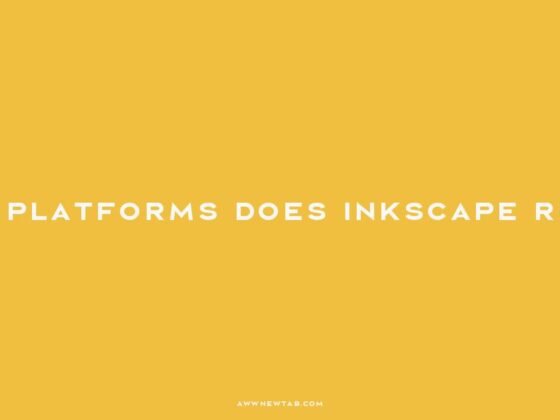How to Color Code a Calendar Item: Your Ultimate Guide to Organization – Are you tired of staring at a monotonous, plain calendar? Do you find yourself struggling to differentiate between your work, personal, and social events? Well, fret no more! In this blog post, we will unravel the mystery of how to color code a calendar item. Whether you’re a meticulous planner or simply someone who wants to add a splash of creativity to their schedule, we’ve got you covered. So get ready to bring some vibrancy and organization into your life as we dive into the world of color-coded calendars.
## Understanding Calendar Color Coding
Color coding in calendars is a powerful organizational tool that helps users quickly identify different types of appointments, meetings, or events at a glance. In our fast-paced world, managing time effectively is crucial, and using colors to differentiate between work meetings, personal appointments, or project deadlines can significantly enhance productivity and reduce the stress of managing a busy schedule. Let’s delve into how you can color code calendar items in some of the most popular calendar applications.
## How to Color Code in Outlook
### Accessing Categorize Function
Assigning a Color Category
To assign a color category in Outlook, it’s as simple as right-clicking on the event in your main calendar view. Look for the option ‘Categorize’ and then select your desired color. This can also be done from within an open appointment or event by locating the ‘Categorize’ button on the ribbon in the Tags group.
### Setting Up Conditional Formatting
Creating Custom Rules
Outlook also allows for more advanced color coding through Conditional Formatting. Navigate to your Calendar folder, click on ‘View’ and then ‘View Settings.’ From there, choose ‘Conditional Formatting.’ Here, you can create a new rule with a unique name and associate it with a specific color.
- Open Outlook and go to the Calendar folder.
- Select ‘View’ > ‘View Settings.’
- Click on ‘Conditional Formatting.’
- Click ‘Add’ to create a new rule.
- Name your rule and select a color.
- Define the conditions that will trigger this color.
This feature is particularly useful for automatically categorizing recurring events or highlighting meetings with specific people.
## How to Color Code in Google Calendar
Edit Event Colors
Google Calendar’s approach to color coding is straightforward and user-friendly. To change the color of an event, simply open the event invitation and click ‘Edit.’ You’ll then have the option to select the current calendar color and either create a new color label or add an existing one.
- Open Google Calendar on your computer.
- Click on an event to open the invitation.
- Hit ‘Edit’ to modify the event details.
- Choose the color option to change the event’s appearance.
Color coding in Google Calendar not only helps with visual sorting but also synchronizes across devices, ensuring that your schedule is clear and organized wherever you go.
## Best Practices for Color Coding Your Calendar
### Consistency is Key
When color coding your calendar, maintain consistency with your color choices. For instance, use the same color for all work-related events and a different color for personal activities. This will help you develop a quick visual shorthand for your schedule.
### Limit Your Palette
While it might be tempting to use a rainbow of colors, too many colors can become confusing and counterproductive. Stick to a limited palette for clarity.
### Adjust As Needed
Your needs might change over time, so feel free to adjust your color-coding system. However, make these changes deliberately and update past events if necessary to keep consistency.
### Utilize Shades
For nuanced categorization, consider using different shades of the same color. For example, light blue for general work tasks and dark blue for important deadlines.
### Combine with Other Tools
Color coding is most effective when combined with other organizational tools, such as time blocking, reminders, and priority flags. Use these in conjunction to maximize your productivity.
## Conclusion
Color coding your calendar items can be a game-changer for time management and organization. By using the steps outlined above for Outlook and Google Calendar, you can set up a system that works for you and helps keep your daily routine clear and manageable. Remember, the key to successful color coding is to ensure it is simple, consistent, and adaptable to your evolving needs. Start color coding today and watch your productivity soar!
FAQ & Related Questions about How Do I Color Code A Calendar Item?
Q: How do I color code a calendar item in Outlook?
A: To color code a calendar item in Outlook, right click the appointment, meeting, or event from your main calendar view, point to Categorize, and then click a color category. You can also go to the Calendar folder, select View > View Settings, then select Conditional Formatting to create a new rule and choose a color.
Q: How do I color code a calendar item in Google Calendar?
A: To color code a calendar item in Google Calendar, open the event invitation, click Edit, select the current calendar color, and create or add an existing color label.
Q: How do I change the color of a calendar item in Google Calendar?
A: To change the color of a calendar item in Google Calendar, go to the Settings menu, find and tap the calendar you wish to change, and then press the Color button in the options menu for that calendar.
Q: Can I color code a calendar item from an open appointment or event?
A: Yes, you can color code a calendar item from an open appointment or event. In Outlook, look for the Categorize button on the ribbon, in the Tags group. In Google Calendar, click Edit on the open event invitation and select the current calendar color or create/add an existing color label.
Q: How do I assign a color category to a calendar item in Outlook?
A: To assign a color category to a calendar item in Outlook, right click the appointment, meeting, or event from your main calendar view, point to Categorize, and then click a color category.


